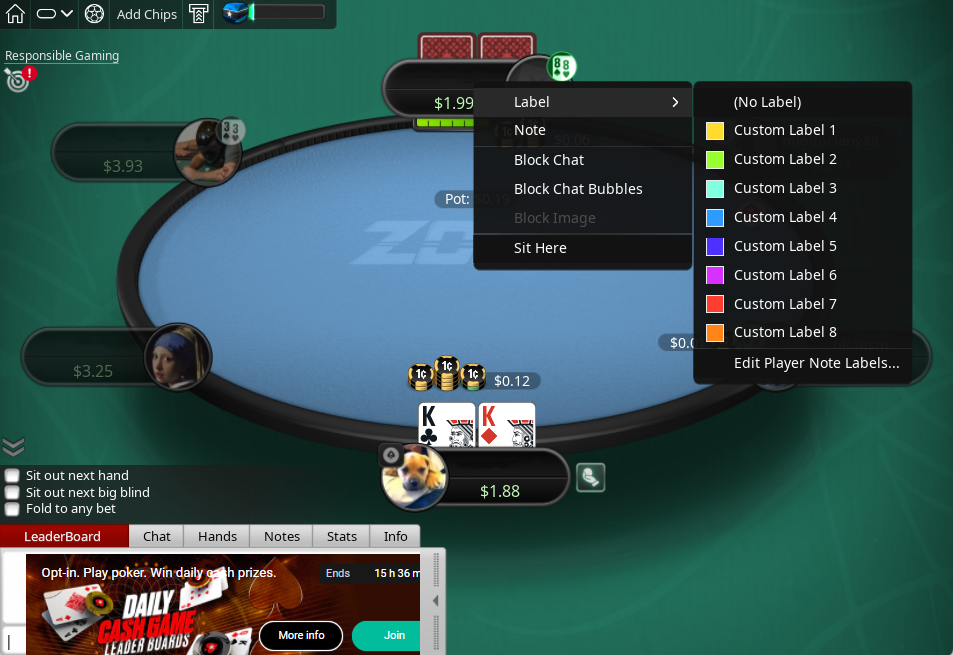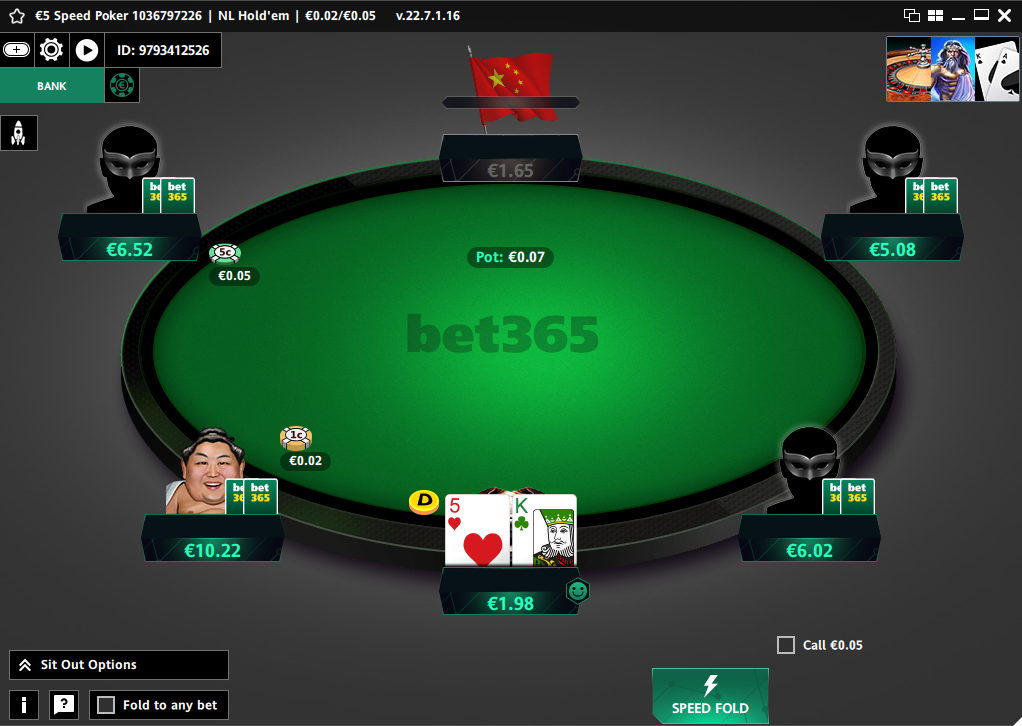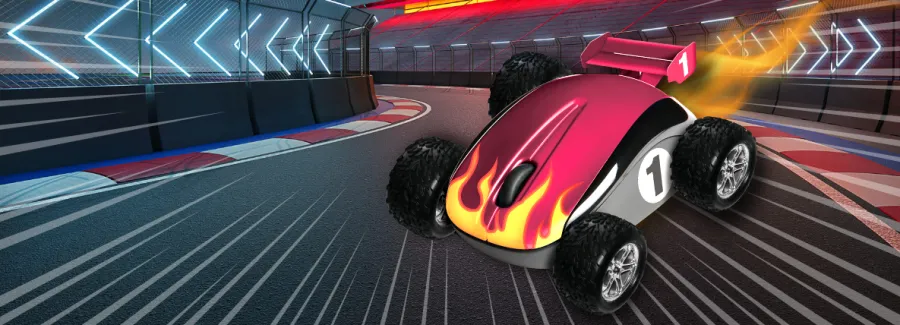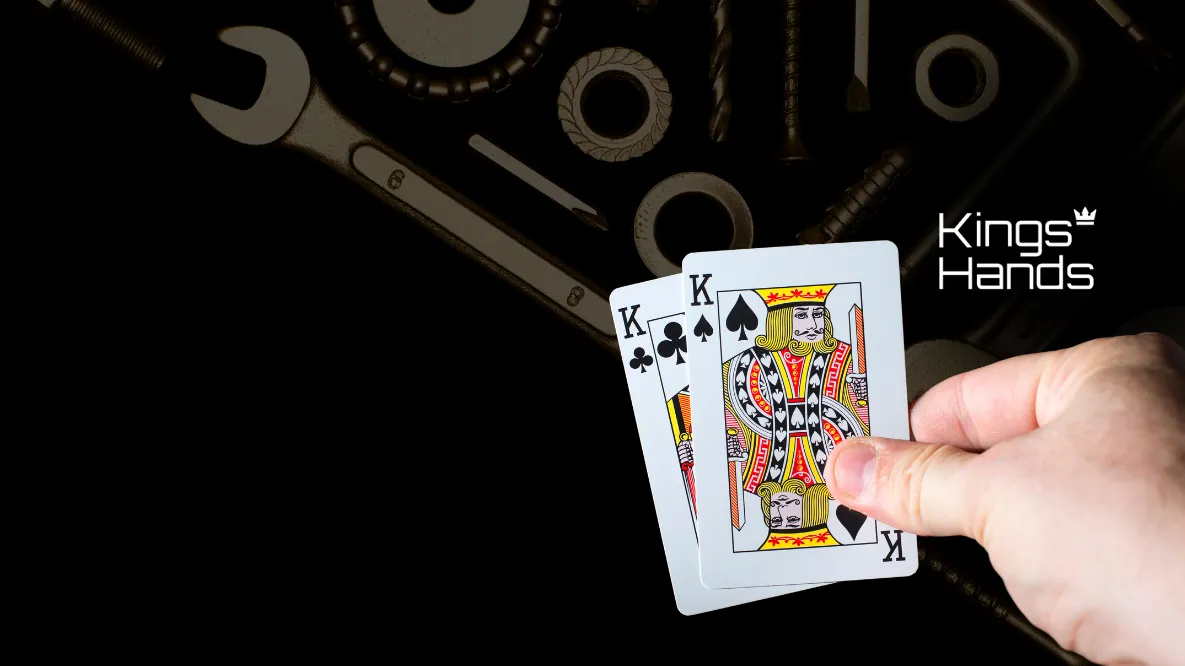Zoom poker is one of the most popular online poker formats. Each popular site has its own variant of zoom poker, whether it’s Party Poker’s FastForward, 888’s SNAP Poker, the iPoker Network’s Speed Poker or Poker King’s Blitz Poker.
One of the reasons it’s so popular is due to the game’s fast-paced nature. You have very little downtime when playing zoom poker, so you’re always in the action and always making decisions. However, because it’s so popular, it’s also one of the most competitive online poker formats.
In this article, we’ll look at exactly what zoom poker is, whether it’s profitable, and the strategies you can use when you play.
What is Zoom Poker?
Zoom poker is the modern equivalent of Full Tilt Poker’s “Rush Poker,” which was released in 2010. This game format allows you to fold your hand before your turn to act and instantly get put at another table and be dealt another hand – without having to wait for your hand to be over. This feature is called “fast-fold.”
When you start playing a zoom poker game from the lobby, you’re put in a pool of players who are all playing the same stake level. This is called the player pool. Every time there are enough players to fill a table, a new table is created, and six players are randomly selected to fill that table. If a player chooses to fold their hand, they’re immediately placed back in the player pool and assigned another seat at random.
This eliminated one of poker’s major downsides: when you fold your hand, you’re out of the action until the current hand is complete. In doing so, it also drastically increases the number of hands you could play per hour, even if you only play one table. On just one table of zoom poker, you can expect to play between 200-250 hands, which is around 4x as many hands as a regular online cash game and around 8-10x as many hands as a live cash game!
What Makes Zoom Poker Different From Other Formats?
The big thing that differentiates zoom poker from other poker formats is the ability to fold before it’s your turn to act. While this doesn’t affect the game’s mechanics (the software will wait until it’s your turn before your hand is actually folded), it allows you to play another hand immediately without having to wait around for the hand to finish. This impacts the game in two major ways.
1. It’s Easier To Play Tight
The first way is that it becomes much easier to wait for good cards. If you see around 250 hands per hour, you can expect to get aces, kings, queens, and jacks around once per hour, as well as other strong preflop hands like AK, AQ, pocket tens etc. If you know that you’re likely to see these strong hands in a relatively short space of time, it becomes easier to wait for them, and therefore players are less likely to play bad hands out of boredom and frustration.
This makes the games a lot tighter, as you’ll find a higher percentage of nits in these games than you would a regular cash game table, as well as other regular players who know their preflop ranges. You’ll find there’s a lot more 3betting and 4betting at zoom tables compared to regular online cash games, and this is a function of having a higher percentage of regular players at your tables on average. These players know that you need to be aggressive in your preflop strategy, especially when the rake is so high, so they do less preflop calling and more preflop re-raising.
2. Focus Is Harder
The next way it impacts the game is the amount of focus it takes to play well. In a regular cash game, when you fold your hand, you can essentially take a “mini-break” from the game. While you should be watching what your opponents are doing, that’s not as strenuous as being involved in the hand yourself.
However, in zoom poker, there is no downtime, as whenever you fold a hand, you’re instantly put back into the action without any breaks. This can be draining for players who aren’t used to it and can lead to a lot of sloppy decision-making. As you’re playing so many hands per hour, it’s important to focus, as any loss in profitability is magnified the more hands you play.
For example, if you’re the kind of player who starts to play worse at the end of their cash game session, you’ll see your results get worse with zoom poker. Say, on average, you lose 0.1bb per hand you play in the last hour of your session as your brain starts to get tired. On a regular cash game table, that will be around 50-75 hands, so you can expect to lose between 5-7.5bb. However, on a zoom poker table, that will be 200-250 hands, so you can expect to lose 20-25bb in that last hour. That’s a quarter of a buy-in!
Is Zoom Poker Profitable?
While Zoom poker is tough for those who aren’t used to playing it, the game is certainly profitable – it just takes some adjustments. There are several ways you can profit from playing Zoom poker, as long as you know where to look.
- Rakeback – One of the benefits of playing so many more hands per hour is that you get a lot more raked hands per hour. If you’re playing on a site with a good rakeback program, you can see a huge increase in the amount you receive. If you put in enough volume, it’s possible to make a few hundred dollars in rakeback per week playing low-stakes games. Even if you just break even in the games, you’ll be making a lot in rakeback.
- Target The Fish – Recreational players love playing Zoom poker because they love the fast-paced action. Fish love to be in hands, and they don’t like waiting around to do it. Even in Zoom poker, you’ll see plenty of recreationals playing terrible hands preflop. It’s important that you tag these players so you can exploit their play both pre and postflop. Exploiting a fish’s willingness to play garbage hands preflop will lead to you being a profitable Zoom poker player.
- Exploit Weak Regs – Wherever you find fish playing poker, you’ll find weak regs looking to take advantage of them. However, if you’re a shark, you can gobble up fish and bad regs alike, as these players make almost as many mistakes as the fish. Their whole strategy is based around targeting these weaker players, and they will often play too tight against the rest of the table. If you can exploit these tendencies, you give yourself even more ways to make money in Zoom poker.
Zoom Poker Strategies
Now that we know Zoom poker can be profitable, what kind of strategies do you need to use in your game to help you achieve a positive win rate?
1. Always Tag Your Opponents
One of the most important things you can do when playing Zoom poker is to tag your opponents. A major downside of being seated at a new table every few seconds is that it’s harder to build reads on your opponents, as you don’t get to see the hand play out once you’ve folded. That means you need to tag your opponents and note any pertinent information at the earliest opportunity, as this will allow you to better exploit them in future hands.

In fact, the best way of doing this is to use a HUD on the sites that allow it. Heads Up Displays will track how your opponents play preflop and postflop, and as they rely on the hand history files, you don’t need to stay at the table to build up a sample on your opponents. Having a HUD is a huge advantage in Zoom poker, and you’re leaving money on the table if you’re not using one.
2. Tight, But Aggressive Preflop
When it comes to zoom poker, tight is right, but aggressive is even more right. As we noted earlier, a higher percentage of your opponents will be waiting for strong preflop hands before they come in for a raise, so you need to be playing tight as a response to that; otherwise, you’re just going to be losing money.
The second part of the equation is being aggressive. Rake is often quite high at zoom tables, but if a hand doesn’t move past postflop, no rake is taken. Therefore, the more hands you win preflop, the less rake you have to pay, and the higher our win rate is. You want to construct aggressive 3bet and 4bet ranges, particularly against late position opens, that will exploit the weak regulars trying to pick up the blinds.
3. Fold Rivers
A classic piece of poker advice that holds true in Zoom poker is to “fold rivers.” Now, this advice is specifically related to facing a triple barrel from your opponent, as this is a chronically under-bluffed line.
It takes a lot of guts to bluff all three streets after an opponent has called you down on the flop and turn, and as such, many players decide to give up by the river. This means that their ranges are much more weighted towards value when they do make that bet on the river, so unless you have a really good hand, you should save the money and fold the river.
4. Adjust To Your New Table
If you’re using a HUD or tagging your opponents like a good Zoom player, it won’t take long until you can spot a good table from a bad one. Being able to tell the difference can greatly impact your win rate, as it allows you to make adjustments based on the table composition.
For example, if you’re at a table with a lot of loose aggressive regulars, you won’t want to make a light open, as it will likely be 3bet, and you’ll just have to fold. However, if you’re on a table with a bunch of nits, making that light open suddenly becomes a lot more profitable, as you’re likely to pick up the blinds with very little resistance.
Challenges of Zoom Poker

While there’s money to be made in zoom poker, it’s not without its challenges. Some say that it’s the hardest format to master, but if you can master it, you can likely win at any poker format. These are the specific challenges you should look out for if you’re considering taking the plunge.
High Variance
Due to the number of hands you’re playing per hour, it’s a lot more common to experience big swings during a session when playing Zoom poker. These swings can be hard for players to take; you need a lot of mental fortitude to play Zoom poker. It’s not uncommon to have days where you lose ten buy-ins or more, especially if you’re only a slight winner in the game.
If you’re someone who feels the effect of losses like this, we recommend using a stop loss that will limit the effect of these emotions. If you quickly lose three of four buy-ins in your first hour and start to tilt, you can easily tilt away your whole bankroll, so it’s better to take a break and live to fight another day.
Demanding Focus Levels
There are no breaks in Zoom poker unless they’re self-imposed. You can’t take a minute or two to relax while other people are playing a hand; you’re constantly in the action and constantly having to make decisions.
This level of focus is hard to keep up over a sustained period of time, and after a while, most players will switch to auto-pilot mode. Playing on auto-pilot is dangerous for your win rate, as when you’re on auto-pilot, you’re not thinking things through, and you’re often making subpar decisions. If you have trouble focusing, remember to take frequent breaks and allow your mind to reset before you sit back down and start playing again.
Increased Blind Play
As you’re constantly moving around the tables, your seating position isn’t going to be sequential like it is in a regular cash game. You won’t go from the cutoff to the button to the small blind; you could be on the button three hands in a row, then in the big blind four hands in a row. While it works itself out in the end, and you will play an equal percentage of hands in all positions, you’ll end up playing a greater overall number of hands in the blinds, as you’re playing a greater number of hands overall.
The small blind and big blind are going to be your worst positions in terms of profit, as you’re automatically starting with a -50bb/100 and a -100bb/100 deficit, respectively, before you’ve even been dealt your cards. You’d be surprised how many players are losing players just because of their poor blind play. The more hands you have to play in the blinds, the more that weakness is exposed, and the more money you lose.
Is it Time to Zoom Ahead or Stay in the Slow Lane?
If you’re a player who likes action and likes to play a lot of volume without the hassle of opening sixteen different tables, then Zoom poker is definitely the game for you. The “fast-fold” feature means you’re always in the action, taking less than a second to be dealt a new hand at a new table. This level of speed means you can play around 250 hands an hour per table, so it’s perfect for high-volume grinders. Just remember that the games will often be tighter than most games, but if you employ a tight-aggressive strategy that exploits the fish and the weak regulars, you’ll be a profitable Zoom player in no time.





















